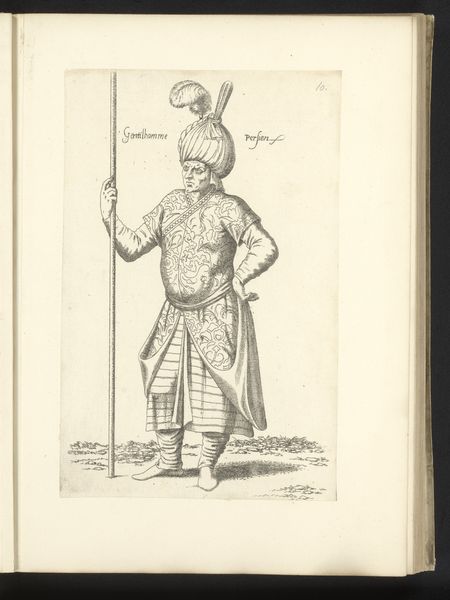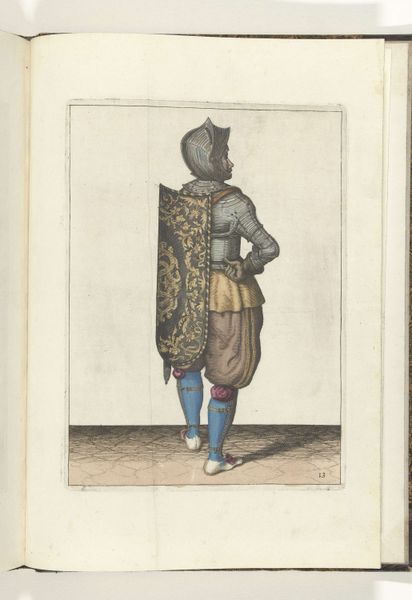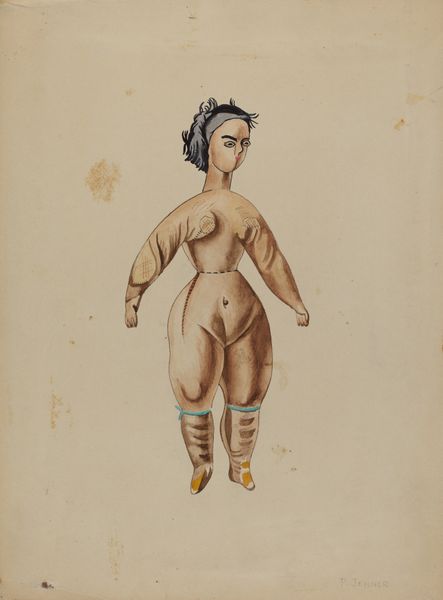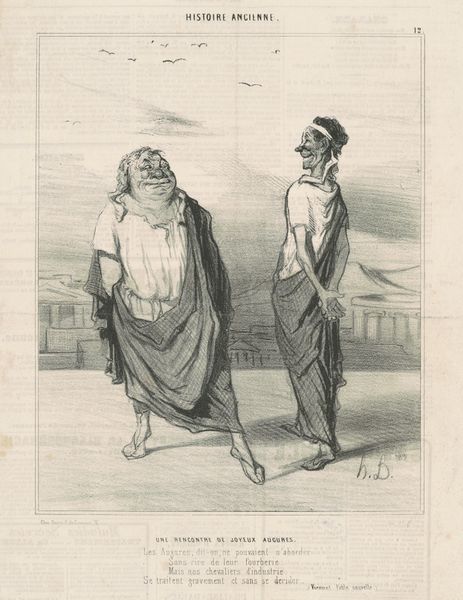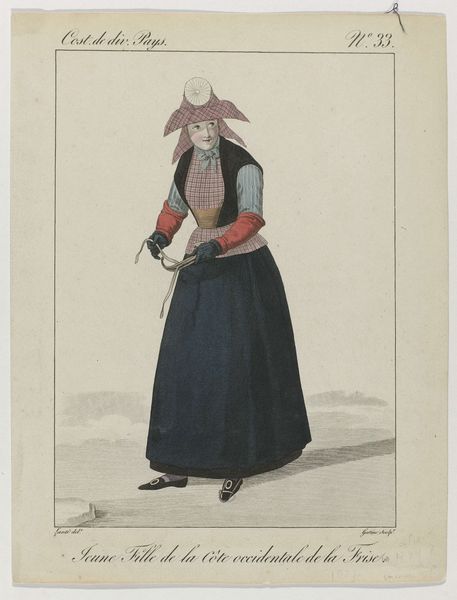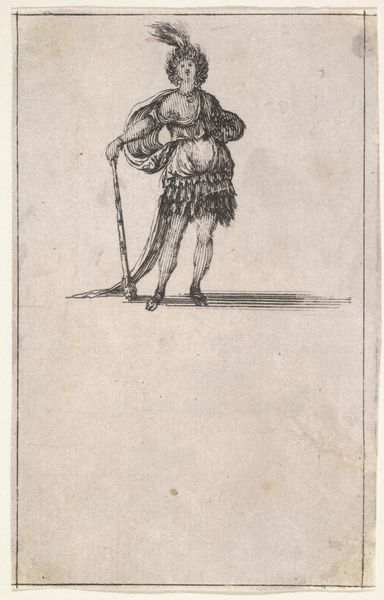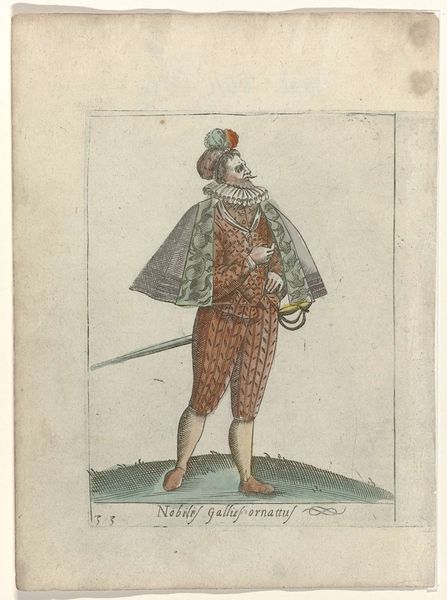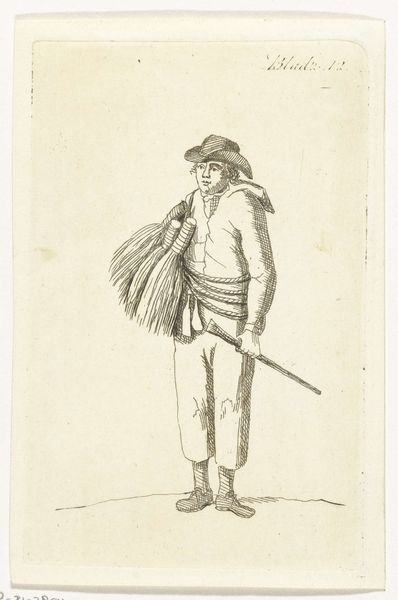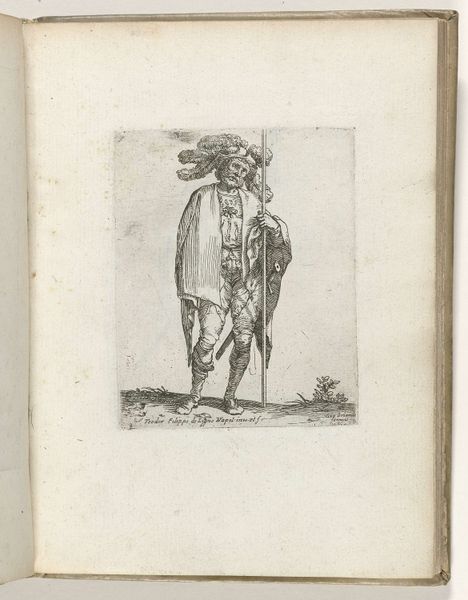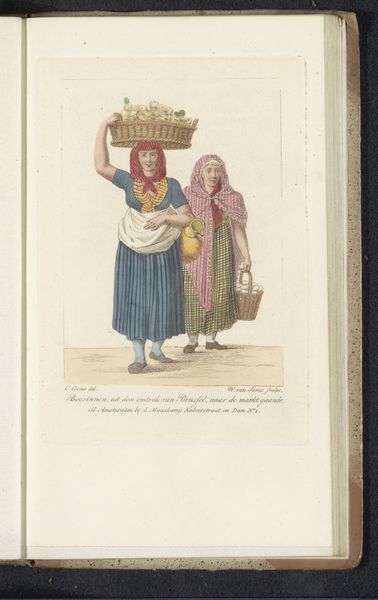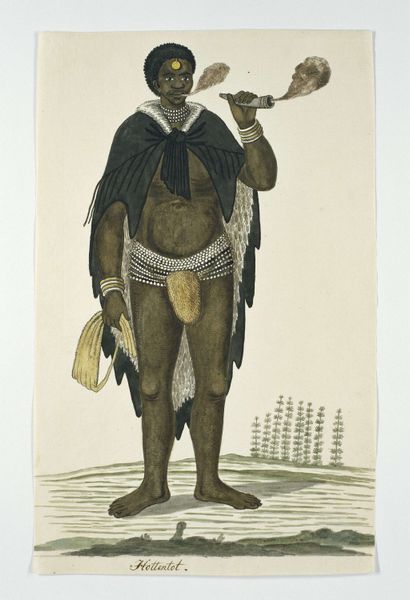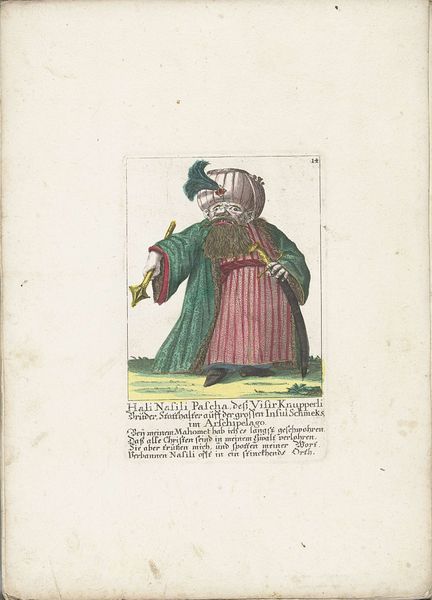
Dimensions: height 187 mm, width 117 mm
Copyright: Rijks Museum: Open Domain
Editor: This is "Klederdrachten van eiland Gozo," or "Traditional Costumes from the Island of Gozo," a watercolor by Louis Ducros from 1778, held at the Rijksmuseum. I find the subject’s stance, with his arms crossed, rather defiant. How do you interpret this work? Curator: I see this as more than just a simple record of clothing. Think about 1778: Europe’s fascination with the “exotic” was flourishing. This image, then, becomes implicated in colonial ways of seeing. Who is Ducros depicting, and for what audience? Is he genuinely interested in cultural exchange, or is he participating in the objectification of Gozitan people? Editor: That's a great point. I hadn't considered the perspective of the artist. So, the way he presents the figure could reinforce existing power dynamics? Curator: Exactly. The individual is presented as a type, an example, rather than an individual. His expression is neutral, almost stoic. The crossed arms could read as defiance, as you mentioned, but also as a kind of passive resistance, a withdrawal from the viewer’s gaze. What’s fascinating is that these depictions were used to categorize and control populations within the growing colonial framework. Do you see how even seemingly objective documentation can serve a particular ideological purpose? Editor: Yes, that’s so interesting! I'm beginning to think about how even seemingly innocuous genre paintings can have deeper social and political implications. I now see the piece as part of a larger historical narrative. Curator: And understanding those narratives is key. Art becomes a powerful tool when we use it to question not only what we see, but also why and how we see it.
Comments
No comments
Be the first to comment and join the conversation on the ultimate creative platform.
